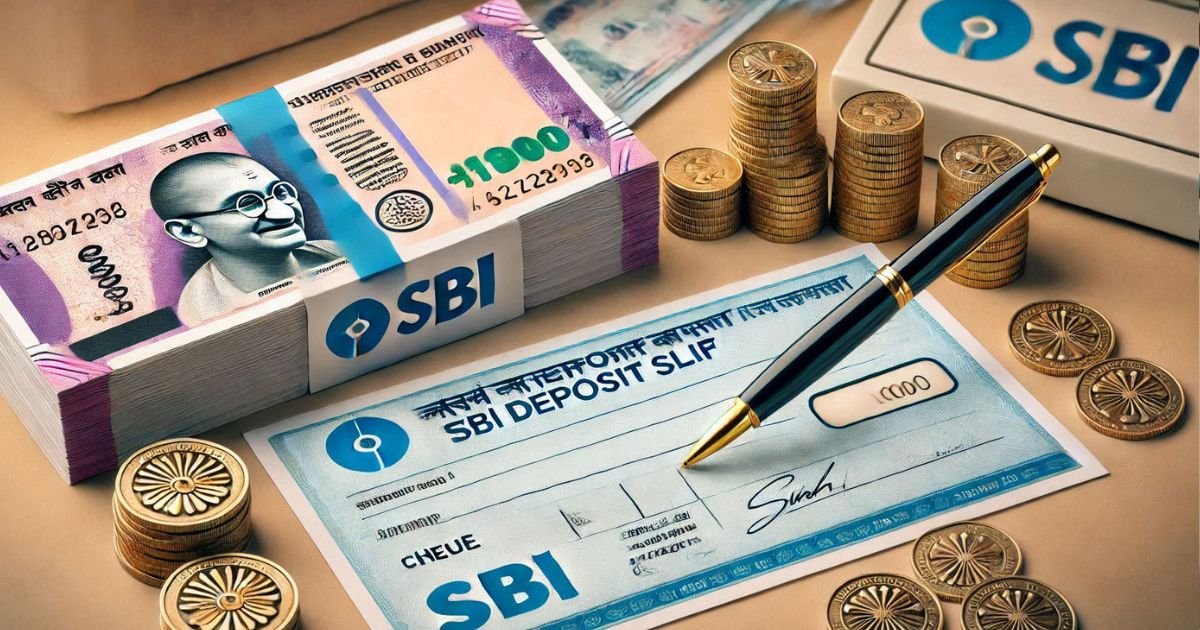One of the most substantial banking establishments in India is SBI-the State Bank of India, offering so many services that make customer dealing with hassle-free deposit facility. On making deposits either in cash or cheques against your name, the procedure requires the SBI deposit slip to ensure accuracy for crediting funds to the beneficiary account. This write-up will, therefore, address an SBI deposit slip completely, how it has significance, and common errors.
What is an SBI Deposit Slip?
An SBI deposit slip is a paper that details the cash or cheque deposits. It serves as your receipt and shows evidence that you have completed your transaction. Filling up the deposit slip correctly will ensure your money reaches the correct account without delay or mistakes.
The deposit slip is divided into two parts:
- Customer Copy: retained by you after completing the transaction as proof.
- Bank Copy: Kept by the bank for its records.
Where to Find an SBI Deposit Slip
You can obtain an SBI deposit slip from:
- Branches: Available at the bank counter or in the self-service kiosk.
- Bank Staff: If you cannot locate one, ask the staff for assistance.
Details Required on an SBI Deposit Slip
When filling an SBI deposit slip, the following details must be provided:
- Date: Date of deposit. Mention the date in DD/MM/YYYY format.
- Branch Name: SBI branch name where you are depositing
- Account Holder’s Name: Enter the full name as registered with the bank.
- Account Number: Provide your 11- or 17-digit account number. Double-check it to avoid errors.
- Amount: Specify the total deposit amount in both figures (e.g., ₹5,000) and words (e.g., Five Thousand Only).
- Denomination Details (for cash deposits): Mention the quantity of notes for each denomination (e.g., ₹2000 × 2 = ₹4000).
- Cheque Details (if applicable):
- Cheque number
- Name of the issuing bank
- Branch name
- Contact Information: Include your phone number for updates or verification.
- Signature: Sign at the designated spot to authorize the transaction.
How to Fill an SBI Deposit Slip: Step-by-Step
Here is a step-by-step guide on how to fill out an SBI deposit slip:
Step 1: Collect the Deposit Slip
Take the deposit slip from the counter or kiosk in the branch.
Step 2: Fill in Personal Information
Write your full name, date, and the branch name in the appropriate sections.
Step 3: Enter Account Details
- Write your account number correctly.
- There should be no blot or blurred numbers.
Step 4: Indicate Type of Deposit
Cash deposit: Mention the denomination like, for example: ₹500 × 4, ₹200 × 5,
Cheque deposit: Put cheque number, issuing bank and branch.
Step 5: Mention the Deposit Amount
Clearly write the amount in both figures and words. Ensure the amount matches the cash or cheque value.
Step 6: Provide Contact Details
Add your phone number for follow-up or issue resolution.
Step 7: Sign the Slip
Sign at the bottom of the slip to authorize the deposit.
Step 8: Submit the Slip
Hand over the completed deposit slip along with the cash or cheque to the bank teller.
Why is SBI Deposit Slip Important?
- Proof of Transaction: It is a receipt for your deposit.
- Accuracy: The amount will be credited correctly to your account.
- Record Keeping: Helps both you and the bank maintain a record of the transaction.
Common Mistakes to Avoid When Filling an SBI Deposit Slip
- Incorrect Account Number: Be sure that the account number is correct so that funds are not credited to the wrong account.
- Unclear Writing: Write legibly to avoid confusion.
- Missing Details: Ensure all sections of the slip are completed.
- Omitting Contact Information: Adding your mobile number can help resolve issues quickly.
- Incorrect Denomination: If depositing cash, ensure that the denominations and totals match.
How to Handle Errors on an SBI Deposit Slip
When you commit a mistake during filling the slip:
- Throw the erroneous slip
- Obtain a new deposit slip and re-fill it very carefully.
- Seek help from bank employees if you are not sure.
Benefits of Using an SBI Deposit Slip Correctly
- Efficiency: Ensures your transaction is processed smoothly.
- Reduced Errors: Helps avoid mistakes in cash or cheque deposits.
- Transparency: Offers clarity for both the bank and the customer.
Braj Verma is a resident of Rajgarh in Madhya Pradesh and is a content writer and freelancer by profession. He has a degree in Political Science from Barkatullah University, Bhopal. He has expertise in subjects like credit cards, banking, loan, insurance, political analysis and digital marketing.

